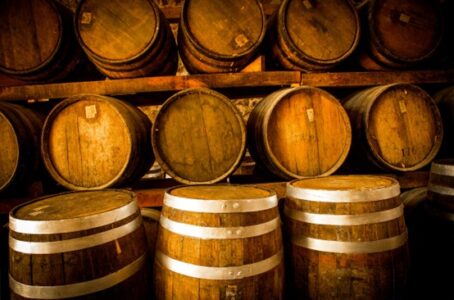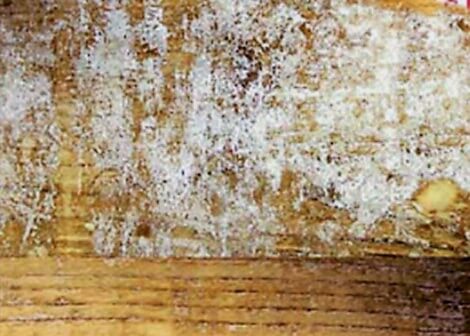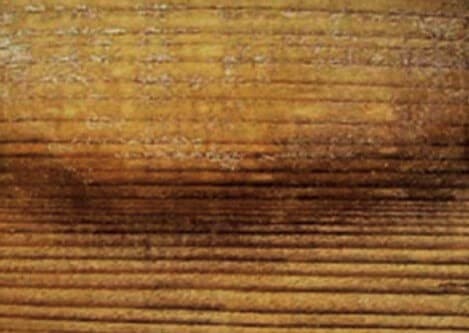In this article:
- Microbiological control in the cellar: the current panorama
- Modern techniques in response to ancient work needs
- Washing barrels is not a simple matter
- Comparison of different wine barrel sanitising techniques
- Ozone sanitisation: a distillate of benefits
Microbiological control in the cellar: the current panorama
Today, ozone sanitisation is the most effective technology for sanitising wine cellars, wooden barrels and any equipment used in the production and storage of wine.
Among the main reasons why wine operators are increasingly turning to this all-natural sanitisation option are the maximum effectiveness of ozone in killing bacteria and mould, the reduced costs and the perfect preservation of the drums after cleaning.
Why is the choice of cellar sanitisation technique so important? For those working in the wine industry, knowing how to navigate the landscape of different microbiological controls and identifying the most effective method means safeguarding the quality, wholesomeness and marketability of wine.
A series of advantages that Movingfluid is at the forefront of guaranteeing, thanks to the creation of a high-performance, intuitive and green ozone sanitisation system, available to wine producers via on-site service, rental or purchase, so that everyone can feel free to test it and get to know it gradually, according to their own needs.
Since the technologies available for cleaning and sanitising wooden barrels are as varied as the types of materials and surfaces to be treated, we summarise below the main characteristics of each, with analysis and data in hand. So let’s try to find together the best answer to what is, to all intents and purposes, an extraordinarily topical problem for the wine industry.
Modern techniques in response to ancient work needs
Wooden vessels have remained traditionally linked to the production, processing and storage of wine, as have their techniques of use. Barrels, barriques, vats still represent the true soul of the winery. This also applies to all other beverages – such as grappas, liqueurs, spirits, beers, vinegars – that finish their maturation in contact with wooden planks.
For this reason, a good sanitisation treatment must not only guarantee the elimination of bacteria and mould, but also respect and enhance the essence of the wood, without releasing odours or flavours that could alter the organoleptic qualities of the beverage stored in it.
Why is the choice of cellar sanitisation technique so important? For those working in the wine industry, knowing how to navigate the landscape of different microbiological controls and identifying the most effective method means safeguarding the quality, wholesomeness and marketability of wine.
A series of advantages that Movingfluid is at the forefront of guaranteeing, thanks to the creation of a high-performance, intuitive and green ozone sanitisation system, available to wine producers via on-site service, rental or purchase, so that everyone can feel free to test it and get to know it gradually, according to their own needs.
Since the technologies available for cleaning and sanitising wooden barrels are as varied as the types of materials and surfaces to be treated, we summarise below the main characteristics of each, with analysis and data in hand. So let’s try to find together the best answer to what is, to all intents and purposes, an extraordinarily topical problem for the wine industry.
In addition to attention to the storage of wine vessels, those working in wine cellars today have to pay attention to numerous other binding external parameters in order to choose the most satisfactory method of sanitisation.
These include health obligations, consumer demands in terms of product quality, and the focus on adopting green, chemical-free procedures. Finally, where barrel cleaning activity can represent a cost that has a high impact on the margins of the entire production, it is essential for operators in the sector to find an effective response linked to the economic sustainability aspects of the sanitisation process.
All this, without forgetting the challenge posed by increasingly unpredictable bioclimatic conditions, with clear implications on the possibility of uncontrolled proliferation of bacteria and mould, in contact with organic materials.
There are many obstacles to overcome. But not impossible. Not for Movingfluid.
The good news is in fact that, in line with the technological advances made by the industry, sanitisation methods have also made enormous progress, reaching levels of excellence with ozone sanitisation, as we are about to see.
The use of ozone in gaseous or liquid form, depending on the application, is also the solution to which Movingfluid has turned, either with on-site sanitisation services or by offering the availability, to those who prefer it, to use the system themselves, for hire or for sale.

Washing barrels is not a simple matter
After use, wine containers contain tartrate incrustations, as well as other organic deposits that need to be removed. The greatest risk is related to the presence of contaminating microorganisms, yeasts and bacteria, which find the niches and porosities in the irregular surface of the wood an ideal environment to develop.
The most dangerous of these is certainly Brettanomyces bruxellensis, a yeast that particularly develops in red wines with the highest PH, causing them to spoil, and which is also able to resist high levels of sulphur dioxide and alcohol content. Although it is normally generated after alcoholic fermentation, this yeast can also originate in grapes in the case of poor sanitary quality. In its metabolism, Brettanomyces bruxellensis produces compounds with an unpleasant odour, the so-called “Brett note”, which can be traced back to animal, leather or horse scents.
Despite being an activity that has been practised for thousands of years, the perfect cleaning of the drums and the elimination of bacteria is still an operation that poses many challenges, some of which are related to the very structure of the barrels and barriques:
- the conformation of the barrels makes the inner surface difficult to inspect. In order to reach the dirt and remove it mechanically or chemically, it is necessary to pass through the bunghole, a single access hole a few centimetres in diameter at the top;
- the cleaning action must take into account the fact that the wood has a limited resistance to stress and can therefore be easily damaged, compromising the tightness of the drum;
- the wood’s porous and inconsistent surface means that dirt and microorganisms can nest in hard-to-reach places, hindering removal.
Decisive for the effectiveness of cleaning is therefore also the penetration capacity of the chosen media. Ozone sanitisation in gaseous form is able to reach any spot evenly, ensuring the total removal of bacteria from even the most hidden cracks.


Contaminated barrel, before and after ozone sanitisation treatment
Comparison of different wine barrel sanitising techniques
In order to provide wine operators with useful elements for an informed choice, we list below the most commonly used methods for disinfecting wooden containers for food use, excluding chemical methods completely.
And because Movingfluid always bases its solutions on reliable data that can guarantee a real, measurable benefit, the description of the various techniques is accompanied by graphs showing the results of tests carried out specifically to assess the actual bactericidal effectiveness of ozone.
Hot water and high-pressure hot water
Hot water, sometimes pressurised, is the simplest and most widespread barrel cleaning technique.
Its effectiveness in terms of killing bacteria depends on the set temperature and pressure levels and the degree of microbial contamination. In particular, the depth at which certain micro-organisms such as Brettanomyces can lurk makes particularly aggressive treatment necessary, so that it can reach all points.
Clearly, this results in a very high exposure to damage for the wood, which will be more fragile and impoverished.
Water steam treatment
Compared to the previous cleaning technique, steam treatment allows savings in terms of water used, at the expense of high costs due to higher energy expenditure related to the generators used. For sanitisation, steam is usually fed into the barrel through its hole and, after saturation, a treatment that can last up to 30 minutes is carried out.
This treatment has many limitations in its ability to rumble cells out of deep cracks and joints between planks. Furthermore, as in the case of treatment with pressurised hot water, water steam can have a depleting effect on the qualities of the wood.
Sanitising with UV rays
The main advantage of germicidal ultraviolet radiation, when used properly, is that it acts on all micro-organisms, does not generate toxic residues, and above all, micro-organisms are not able to develop resistance to this method, as can happen with chemical disinfectants. However, the ability of this technology to break down yeasts and bacterial load was much lower than that of ozone sanitisation (see details in the graph below).
Ozone sanitisation: a distillate of benefits
The limitations of the various barrel-cleaning techniques outlined above can be said to be completely overcome by sanitising with ozone, a broad-spectrum germicide and bactericide that is highly effective in counteracting problems caused by brettanomyces, applied both to wooden barrels and to all equipment used in oenology and the environment.
All tests carried out show that ozone sanitisation is the most effective cellar sanitisation system in terms of its ability to kill bacteria and mould.
But the benefits of ozone go far beyond this: reduced costs and working time, safety for operators, versatility of use in liquid or gaseous form on surfaces and in the atmosphere, and guaranteed longevity for treated barrels. A 100% natural, clean, odourless and tasteless solution to meet all the sanitisation needs of the wine industry.
If you are interested in ozone sanitisation in your cellar
or
Curious to see our mishap solvers battling bacteria and mould? We talked about our intervention alongside Cantine Riunite in the case history 100% green Ozone Sanitisation.
- Alstom [1]
- ARO Ingersoll Rand [1]
- Automotive [8]
- Brembo [2]
- Case History [13]
- Cast iron brakes [1]
- Ceramic [2]
- Chemical [3]
- chemical mixer [1]
- Chemistry [2]
- Cleaning [1]
- cleaning industrial machinery [1]
- Dilution [1]
- Dosage [4]
- Dust [1]
- Extrusion [3]
- Finishing [1]
- Fluid handling [3]
- Fluids [2]
- Food [1]
- Freni in ghisa [1]
- Gases [3]
- Glue [2]
- Henkel [1]
- Industrial Painting [4]
- IVECO [1]
- Know-how [2]
- Körber Tissue [2]
- Lamborghini [2]
- Liquid paint [1]
- Liquids [6]
- LPR [1]
- Market news [4]
- mixing chemicals [1]
- Nikola [1]
- Oenology [2]
- Oil & Gas [1]
- Paint [2]
- Paper [2]
- Paper converting [1]
- Paper industry [2]
- Powder Coating [1]
- Powders [1]
- pump test bench [1]
- Raw material producer [1]
- Saipem [1]
- Spraying [5]
- Streparava [1]
- SuperSix [1]
- Tissue [3]
- Tissue converting [2]
- Toscotec [1]
- Trail [1]
- Transfer [7]
- Verniciatura industriale [3]